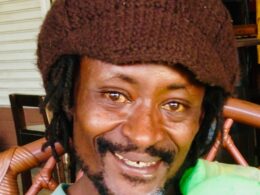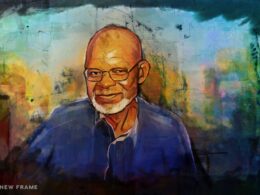Bhikaiji Rustom Cama was born Bhikaiji Cama in Bombay (now Mumbai) into an affluent and influential Parsi family. In 1885, she married Rustom Cama, a wealthy, pro-British lawyer. In October 1896, Mumbai was hit by bubonic plague. Cama volunteered to provide care for the afflicted. She contracted the plague but survived and was sent to Britain for medical care in 1902.
In London, Cama met a circle of radical opponents of British rule in India. She helped to set up the Indian Home Rule Society in 1905. She could not return to India unless she signed a statement promising not to participate in nationalist activities. She refused. Cama moved to Paris where she co-founded the Paris Indian Society. She wrote, published and distributed revolutionary literature and sheltered many world revolutionaries, including Vladimir Lenin.
On 22 August 1907, Cama attended the second Socialist Congress at Stuttgart. Other delegates included Lenin, Rosa Luxemburg and Clara Zetkin. Cama gave a fiery speech, denouncing the effects of the British Raj and demanding equal rights and independence from Britain. She stunned the audience by unfurling an Indian flag: ‘Behold, the flag of independent India is born! It has been made sacred by the blood of young Indians who sacrificed their lives in its honour.’
Cama’s flag, which she co-designed, would become one of the templates for the current national flag of India. In 1909, Cama was involved in aiding the escape of a nationalist being deported to India to stand trial. When the French government refused the British request for Cama’s extradition, the British seized Cama’s inheritance.
Cama actively supported the suffrage[tte] movement and was vehement in her support for gender equality. Speaking in Cairo in 1910, she declared, ‘I see here the representatives of only half the population of Egypt. May I ask where is the other half?’
In 1914, France and Britain became allies, so Cama and other activists agitated among Indian troops. In 1915 she was sent to Vichy, where she was interned. In bad health, she was released in 1917 and after the war, Cama returned to her home in Paris.
Cama remained exiled in Europe until 1935, when, gravely ill, she petitioned the British to be allowed to return home. She finally agreed to renounce seditionist activities and died in Mumbai aged 74 on 13 August 1936.
Courtesy Socialist Review June 2020.










